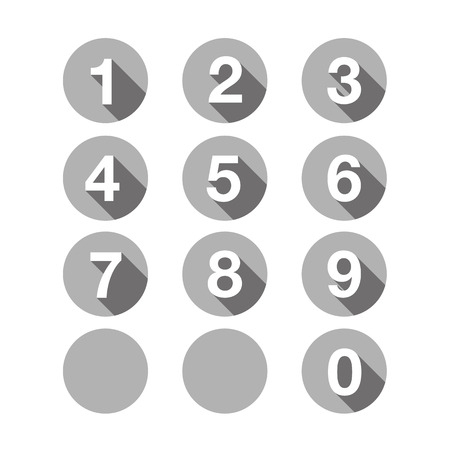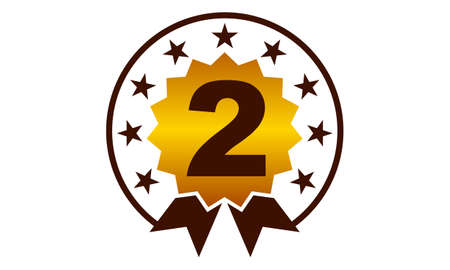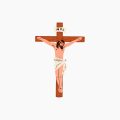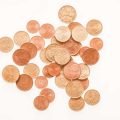Origins of the Elder Futhark: From Nordic Roots to British Shores
Long before the crackle of radio or the hum of electricity, there existed a language whispered on the windswept coasts and carved into the bones of ancient trees—the Elder Futhark runes. Born from the heart of early Scandinavian civilisations, these symbols were more than mere letters; they were vessels for spiritual insight and cosmic wisdom. The runes emerged around the 2nd century CE, woven into the tapestry of Norse culture, inscribed on stones as both memorials and magical wards.
The journey of the Elder Futhark to British soil is a tale that blends history with legend. As Norse explorers crossed treacherous seas, their beliefs and practices travelled with them, washing up upon British shores like driftwood laden with secrets. These runic inscriptions began to appear in the northern isles—Orkney, Shetland, and even parts of Scotland—hinting at a mingling of cultures long before written records took shape.
In Britain’s esoteric traditions, the runes found fertile ground. The land itself seemed to resonate with their energies, echoing the mystical landscapes of Scandinavia but infusing them with uniquely British lore. Over centuries, rune lore was adapted by local mystics and wise folk, weaving together Nordic origins with Celtic myth and Druidic practice. In this way, the Elder Futhark became not just relics from afar but living symbols within British esoteric circles—a bridge between worlds seen and unseen, past and present.
2. Symbolism and Structure: Intricacies of the Elder Futhark Alphabet
To step into the mystical world of the Elder Futhark runes is to embark on a journey through symbols that whisper ancient secrets. The Elder Futhark, comprising 24 distinct runes, is not simply an alphabet; it is a living tapestry of energies and meanings, each rune an archetype echoing through time and resonating deeply within British esoteric traditions.
In the context of British esotericism, practitioners have long revered these runes as more than phonetic marks. They are seen as keys to subtle realms—portals to insight, protection, and transformation. Each rune weaves together layers of symbolic meaning: from the practical (such as cattle or harvest) to the profound (like fate or divine inspiration). The structure of the Elder Futhark is traditionally divided into three groups known as Aetts, each associated with its own thematic current, making them especially conducive for ritual work and divinatory practices in Britain’s rich occult landscape.
The Three Aetts: Structure of the Elder Futhark
| Aett | Runes | Esoteric Focus |
|---|---|---|
| Freyrs Aett | Fehu, Uruz, Thurisaz, Ansuz, Raidho, Kenaz, Gebo, Wunjo | Wealth, primal force, beginnings, communication |
| Heimdalls Aett | Hagalaz, Nauthiz, Isa, Jera, Eihwaz, Perthro, Algiz, Sowilo | Transformation, challenge, cycles, guidance |
| Tyrs Aett | Tiwaz, Berkano, Ehwaz, Mannaz, Laguz, Ingwaz, Dagaz, Othala | Justice, growth, community, inheritance |
Symbolic Resonance in British Esotericism
The adaptation of these symbols in Britain often carries a uniquely local flavour. For example, Fehu—originally associated with cattle—finds resonance as a symbol of material stability and ancestral land within rural British magical circles. Meanwhile, runes like Eihwaz are drawn upon for protection by those traversing the liminal spaces between the wild moors and the urban sprawl. British rune workers frequently engage with these symbols not only for personal insight but also to connect with landscapes imbued with centuries-old myth and folklore.
An Energetic Weave: Runes in Practice
The energy encoded within each rune is felt keenly during rituals and meditations. Practitioners may chant rune names aloud amidst ancient stone circles or inscribe them onto talismans crafted from local wood. The harmony between rune symbolism and Britain’s esoteric heritage is palpable—a living dialogue between past and present. To truly appreciate the Elder Futhark’s intricacies is to allow oneself to be guided by their intuitive wisdom and let their stories unfold within your own spiritual path.

3. Runes in British Folklore and Mysticism
In the mists that shroud the British Isles, the resonance of Elder Futhark runes is felt not only through scholarly study but also within the living tapestry of folklore and mystical tradition. Though these ancient symbols did not originate on British soil, their enigmatic forms have been woven into tales whispered along hedgerows and firesides from Cornwall to the Highlands. The arrival of Viking settlers and Norse traders seeded an enduring curiosity about runic mysteries, which mingled with local lore, giving rise to uniquely British interpretations and practices.
Runes became more than mere inscriptions; they were seen as portals to other worlds—a bridge between the mundane and the magical. Rural cunning folk and wise women would sometimes inscribe runic marks onto amulets or farm tools, believing them to ward off malevolent spirits or attract luck. In some remote villages, tales persist of rune-carved stones hidden in churchyards or beneath ancient yew trees, said to grant visions or prophetic dreams to those who dared touch them under a full moon.
During the Victorian era’s revival of all things arcane, British occultists and esoteric societies found inspiration in the Elder Futhark’s cryptic geometry. Runes entered ceremonial magic alongside Celtic ogham and Arthurian legend, each symbol imbued with personal and collective meaning. Writers such as William Butler Yeats and members of the Hermetic Order of the Golden Dawn explored runes as keys to inner transformation, blending Norse myth with homegrown mysticism.
Today, contemporary practitioners continue this tradition of reimagining. Modern rune-casters gather in druid circles or beneath stone circles like Avebury, casting runes upon mossy earth to seek guidance from ancestors or commune with land spirits. Online communities share stories of rune-inspired synchronicities—dreams punctuated by mysterious sigils or chance encounters with rune-like shapes etched by nature herself on ancient bark or weathered stone.
Thus, the legacy of Elder Futhark in Britain is one of adaptation and enchantment. It is a story told not just through dusty manuscripts but through lived experience: a dance between memory and myth, inviting seekers to trace their own spiral path through history’s labyrinth while honouring both heritage and heart’s intuition.
4. Divination and Ritual: British Approaches to Reading the Runes
Within the mist-laden landscapes of Britain, the practice of rune divination is shaped by both ancient tradition and contemporary sensibilities. The Elder Futhark runes, though rooted in Scandinavian and Germanic origins, have found a unique resonance in the British esoteric community—a blend of reverence for history, intuitive wisdom, and ritual innovation.
Traditional Rune Casting in the British Isles
Historically, British practitioners who adopted rune work often integrated elements from local druidic and folk magic traditions. Traditional casting might involve:
| Step | Description |
|---|---|
| Preparation | Grounding with native herbs like mugwort or rowan; cleansing with sea salt from British coasts. |
| Casting Surface | Using slate from Wales or chalk from the South Downs as sacred surfaces. |
| Rune Selection | Drawing runes from a handmade pouch, sometimes sewn with tartan or linen. |
| Interpretation | Blending Norse meanings with Celtic folklore and personal intuition. |
Modern British Innovations in Rune Work
The British rune community today embraces both traditional forms and imaginative adaptations. Many modern practitioners incorporate elements such as tea rituals before casting, or aligning readings with the cycles of the moon observed on the local landscape—think stone circles at Avebury or ancient yew groves. There is also a growing trend towards group rituals, where runes are cast collaboratively during seasonal gatherings like Beltane or Samhain, deepening communal bonds and spiritual connection to the land.
Ethical Considerations Unique to Britain
British esoteric ethics emphasise respect for ancestry and place. Practitioners are encouraged to seek permission—either spiritually or symbolically—before working on historic sites. Additionally, discretion is valued; readings for others are approached with confidentiality and humility, echoing long-standing traditions of village wise women and cunning folk.
Intuitive Practice: Listening to the Land
A distinctly British approach is the encouragement of listening to local spirits—whether felt in the rustle of beech leaves or the whisper of river mist. Intuition is trusted as much as scholarly knowledge; many practitioners keep personal journals recording not only rune spreads but also dreams, weather patterns, and animal encounters at the time of reading. This weaving together of inner and outer worlds characterises British rune work as an ongoing dialogue between self, symbol, and spirit.
Ultimately, British approaches to Elder Futhark rune divination invite us into a living tradition: one rooted in respect for history yet ever-evolving through ritual creativity, ethical mindfulness, and deep intuitive listening amidst these storied isles.
5. Magickal Application: Runes in British Spellcraft
Within the winding hedgerows and mist-laden woodlands of Britain, the magickal use of Elder Futhark runes has found fertile ground, taking root in both traditional and modern British esoteric practices. In this land where folklore and practical magic entwine, runes are not simply relics from a distant Norse past—they are living symbols, woven into the fabric of contemporary spellwork, talismanic art, and energetic rites.
Runes in Local Spellwork
In British spellcraft, Elder Futhark runes often serve as potent glyphs to focus intent and channel subtle energies. Whether inscribed upon parchment, etched into beeswax candles, or whispered over wild herbs gathered at dawn, each rune is chosen with care to reflect the spells purpose. For instance, Ansuz might be invoked for eloquence during a crucial negotiation, while Berkana is favoured in workings of renewal and growth—especially fitting amidst the verdant English countryside.
Talisman Creation: A Story Told in Symbols
The crafting of runic talismans in Britain is a practice steeped in personal narrative and local tradition. A pendant engraved with Eihwaz may be worn for resilience during challenging times, echoing the stoicism found in ancient British tales. Often, these talismans are blessed under the watchful eye of standing stones or beneath the boughs of ancient yews, drawing upon the land’s inherent energies to amplify their protective qualities.
Energy Work: Runes as Bridges
For British practitioners attuned to subtle realms, Elder Futhark runes act as energetic bridges—linking intention with manifestation. During meditative journeys on windswept moors or at sacred sites like Glastonbury Tor, runes are visualised or traced in the air to unlock deeper layers of consciousness. This fusion of rune lore with local landscape imbues energy work with a distinctly British sensibility: reverent of history, yet ever open to personal revelation.
As we weave these ancient symbols into our daily magickal lives, Elder Futhark runes become more than mere tools—they become companions on our spiritual journey across the storied landscapes of Britain.
6. Contemporary Perspectives: The Rune Renaissance in the UK
As the wheel of time turns, the Elder Futhark runes are experiencing a vibrant resurgence within British esoteric circles. This revival is not merely an echo of distant Norse winds; rather, it reflects a uniquely British reinterpretation, blending ancient wisdom with contemporary spiritual aspirations. Across the rolling hills and bustling cities of the UK, seekers are once again tracing rune shapes—carved into wood, etched on stones, or inked gently onto skin—invoking their timeless magic through both ritual and daily practice.
The Modern Rune Movement
This new wave, often called the “Rune Renaissance,” is fuelled by a desire for authenticity and a return to roots in an increasingly digital and disconnected age. In London’s occult bookshops and at gatherings from Glastonbury to Edinburgh, workshops on runic divination and rune crafting draw attendees from all walks of life. British practitioners are not only studying the linguistic and historical context of the runes but also weaving them into modern practices such as mindfulness, meditation, and personal empowerment. Here, the rune stones become more than artefacts; they serve as portals to inner landscapes and tools for transformation.
Current Trends Among Spiritual Seekers
A notable trend is the integration of rune lore with local folk traditions. It is not uncommon to find rune readings at country fairs alongside tarot and tea leaf readings, or to hear tales of wise women in Yorkshire blending rune symbolism with Celtic knotwork for protection charms. Some modern witches and magicians have begun incorporating runes into their seasonal rituals, especially during solstices and equinoxes when the veil between worlds is considered thinnest.
Folk Wisdom Reimagined
The British approach to runes often carries a gentle pragmatism: while some embrace them as sacred symbols imbued with metaphysical power, others treat them as mirrors for self-reflection or creative inspiration. Folk sayings about “reading the signs” take on fresh meaning as runes are cast across kitchen tables or inscribed onto garden gates for luck. Across generations, there’s a growing respect for intuition—listening to what each rune whispers personally rather than following rigid dogma.
In this ongoing renaissance, Elder Futhark runes become more than relics of a northern past. They are living bridges between myth and modernity, inviting all who encounter them in Britain today to embark upon their own story-led journey of discovery and enchantment.


